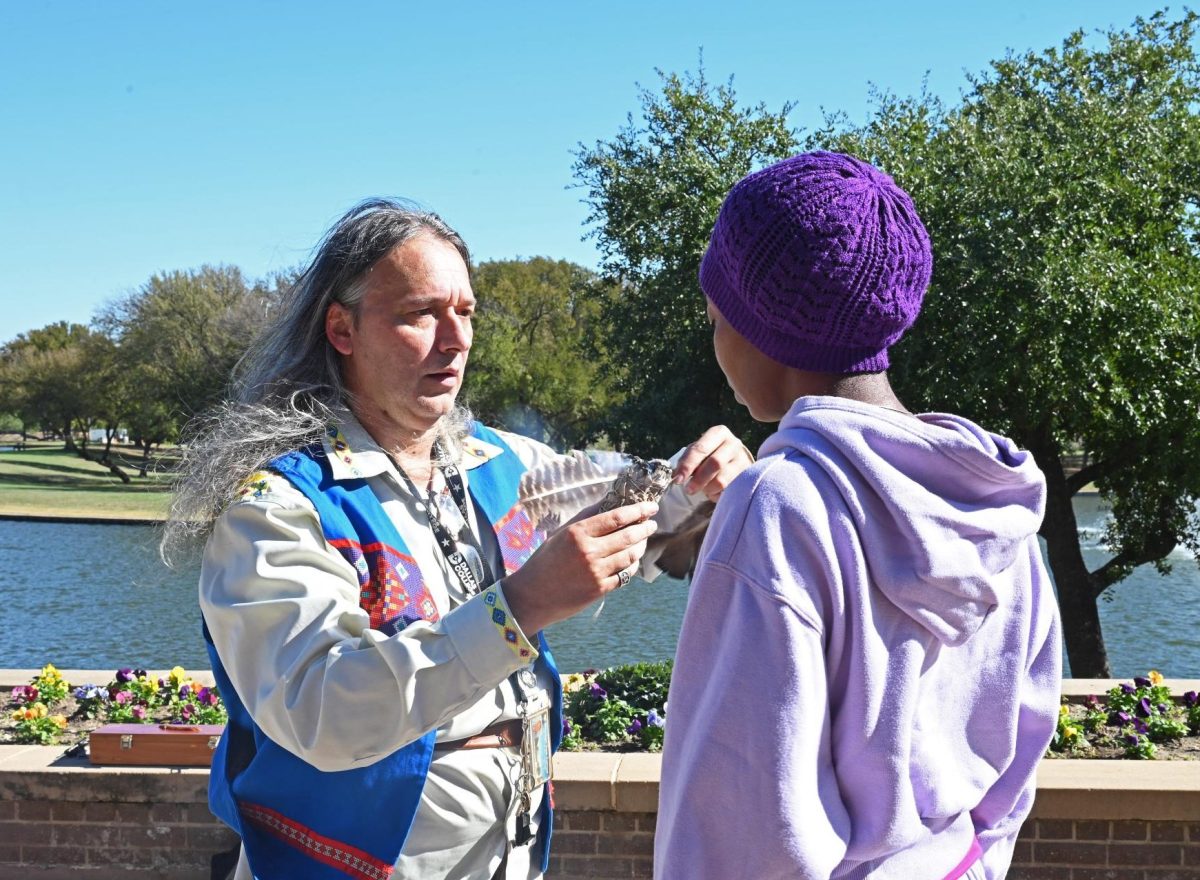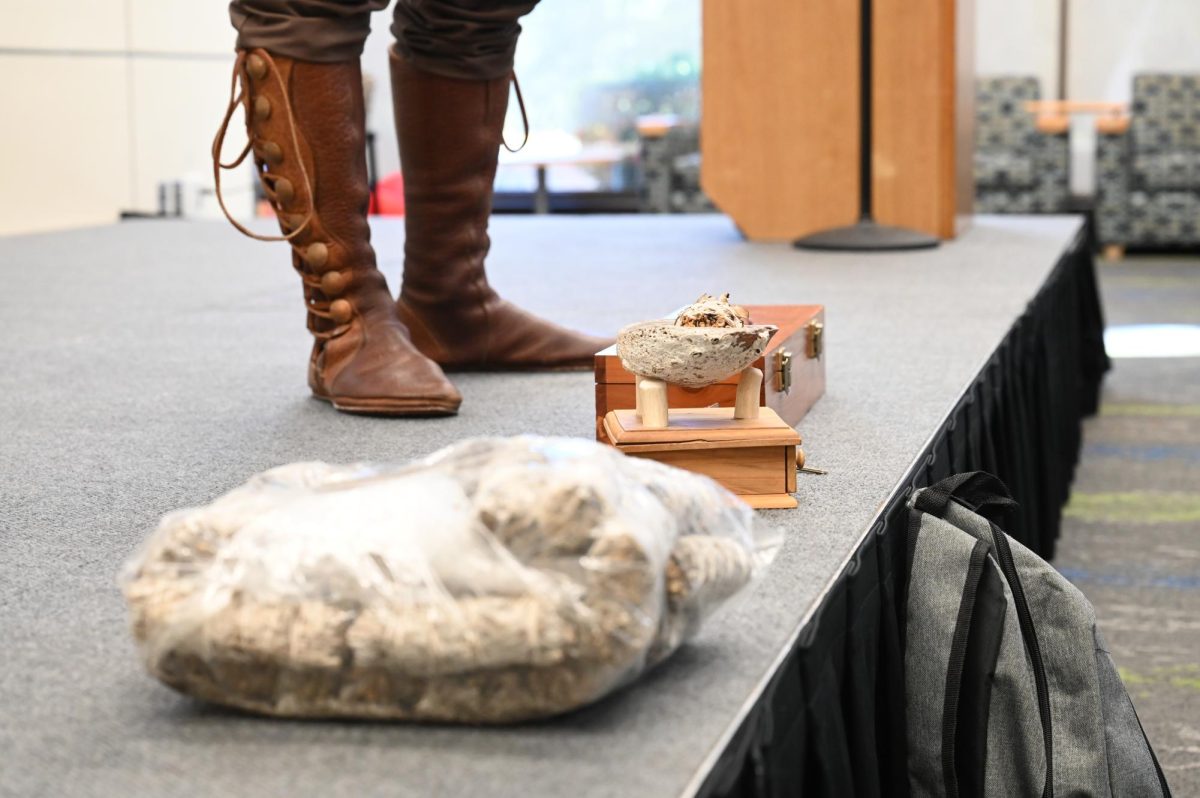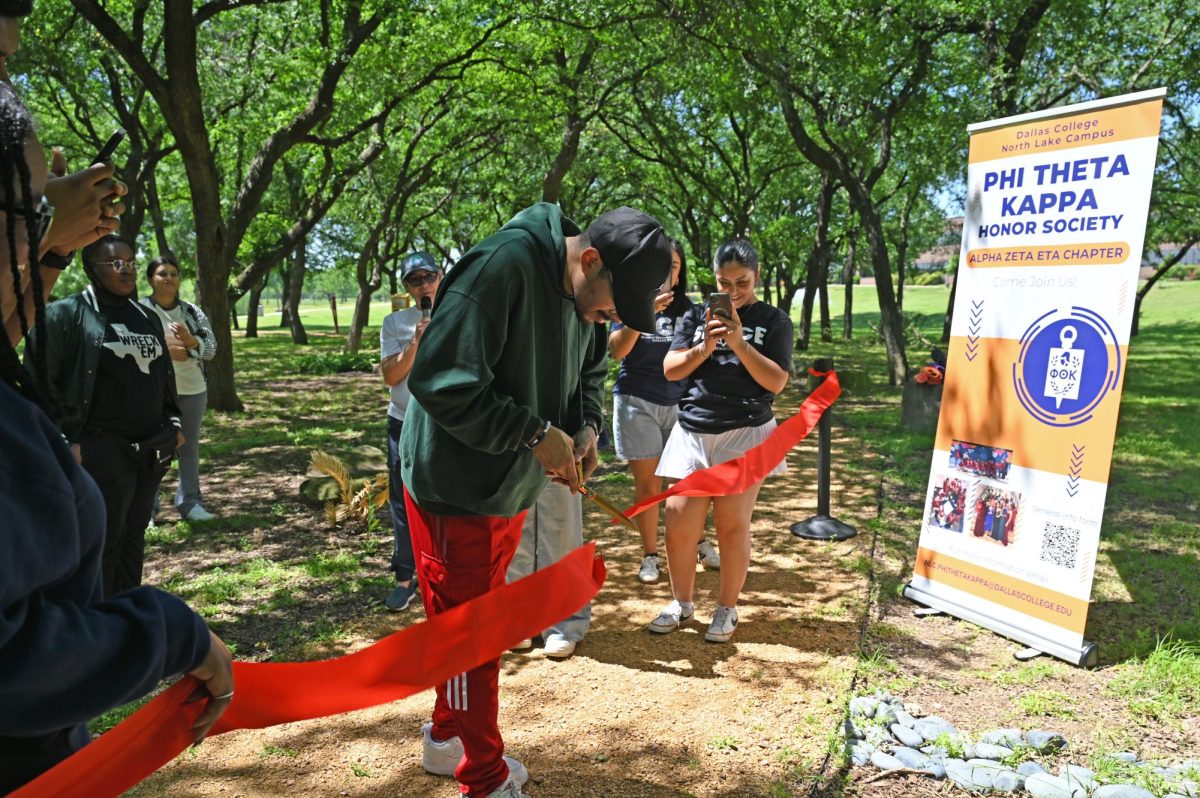Students, staff and faculty cleansed their souls in a smudge ceremony.
Using a lighter, professor Jonathon York had safely lit a stick made out of sage — an Indigenous sacred herb. As it burned, he used feathers to swiftly push the smoke close to one’s chest and head in order to bathe voluntary participants by their ears, month, eyes and heart.
York, who has Indigenous roots, led the ceremony on Nov. 7 at Dallas College North Lake Campus. Echoes of Tradition was one of the many events scheduled to celebrate Native American Heritage Month.
He is one of the few faculty members at Dallas College who is a descendant of Native Americans. His family is part of the Choctaw Nation of Oklahoma and Kanawha River Lepane. By law he is required to say that he is not a tribal member.
York described the smudge as a smoke bath. “It’s more than just a meditative exercise,” he said. “When we perform a smudge we cleanse ourselves, prepare to recenter ourselves [and] find our ground.”
For centuries, Native Americans have smudged as part of a spiritual practice to find their ground and center. It is a meditative exercise to become present and aware with oneself.
“There isn’t a single one of us who doesn’t live in two worlds,” York said. The first world is the one humans see everyday and the second world is the one people may get a glimpse of through this healing and meditative experience.
Sage, sweetgrass, cedar and nicotiana rustica are the four sacred herbs that can be individually burned during a smudge ceremony. Sage is burned to cleanse the soul and remove bad energy. Cedar is burned to bless people and remove negative spirits. Nicotiana rustica – wild tobacco – is burned to help carry a message or a prayer to the creator. And sweetgrass is burned to bring in good energy and promote peace.
A variety of sage rolled into a stick formation can be burned for a cleansing ceremony such as white sage or royal sage, but never Mediterranean sage commonly found in grocery stores. York said white sage, like the one he used to lead the smudge at school, is hard to come by because it needs to be recently picked and fresh for the ceremony.
He held the smudge outside of the Student Life Center, beside the lake. This was where he opened the smudge kit – a wooden box – which included a long feather, a lighter and many stones.
All the regalia – a combination of clothing, accessories and personal items – that York had during the smudge had a meaning behind it, including the ribbon shirt he wore.
York said the first time he wore the shirt was when he led a smudge at his father’s funeral. It was originally a gift for York’s father made by his step brother, an enrolled member of the Cherokee Nation of Oklahoma, but it was instead gifted to him.
The stones he took out from the wooden box were then laid on the floor, on top of a small red blanket, to create a cosmograph, also referred to as the map of cosmos – a map of the universe with cardinal directions: north, west, east and south.
The map was specifically tailored by York.
The cosmograph comes from his maternal grandfather’s tradition within the Kanawha River Lenape – an Algonquian group related to the Delaware Confederacy. Each stone within the map embodied its own distinct symbol. The green stone represented earth, whereas the blue stone represented the heavens.
He held a personal connection to the buffalo shaped stone as it symbolized the transformative journey of his growth into an elder.
York advised students, staff and faculty to not inhale the smoke, but instead, brush it behind their heads. This act served as a symbolic gesture to ensure that the voluntary participants were cleansed, centered, grounded and fully present in the moment.
The stick burned during the entire ceremony and took a couple of minutes to go out. He said the stick should be properly put out in a copper bowl or a hollowed stone to avoid hazards.














